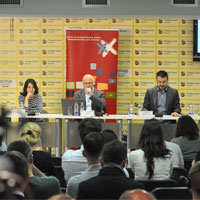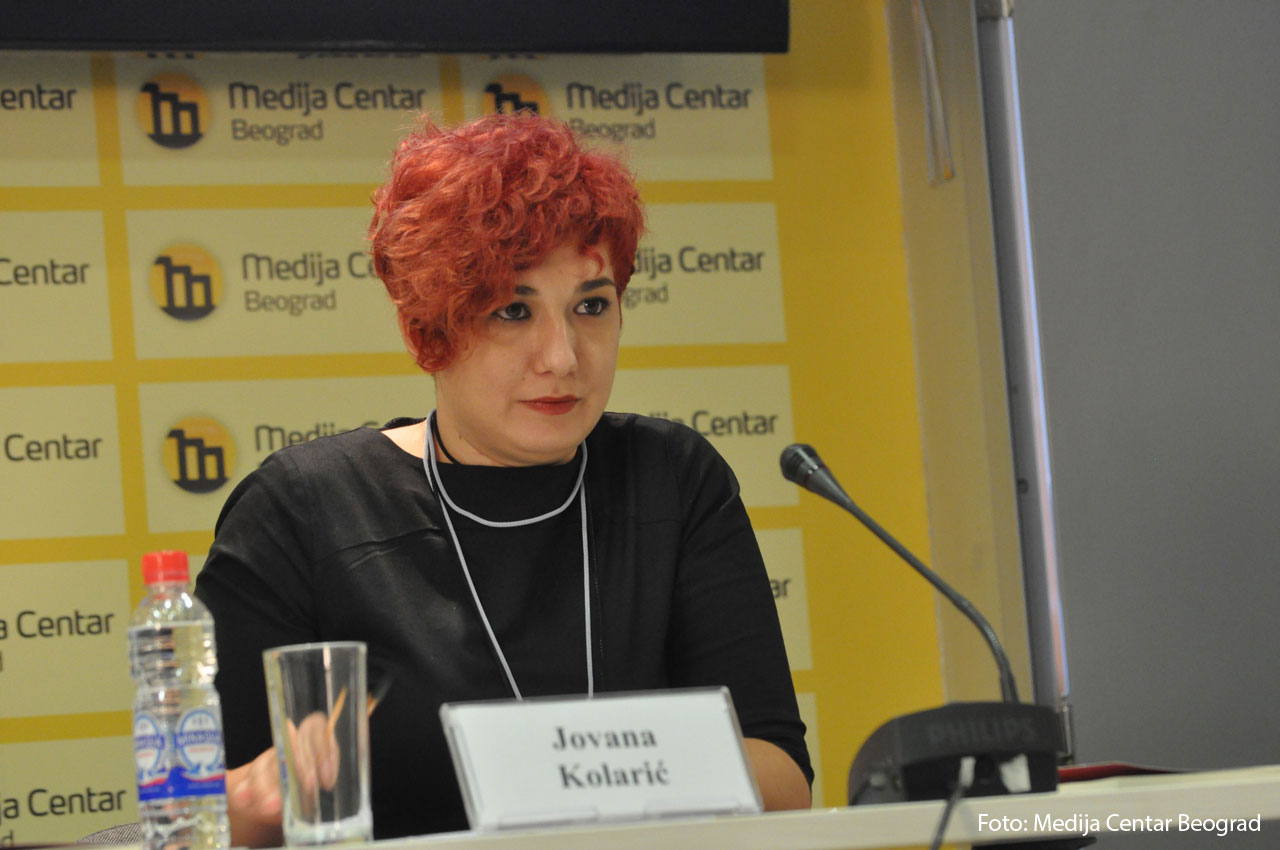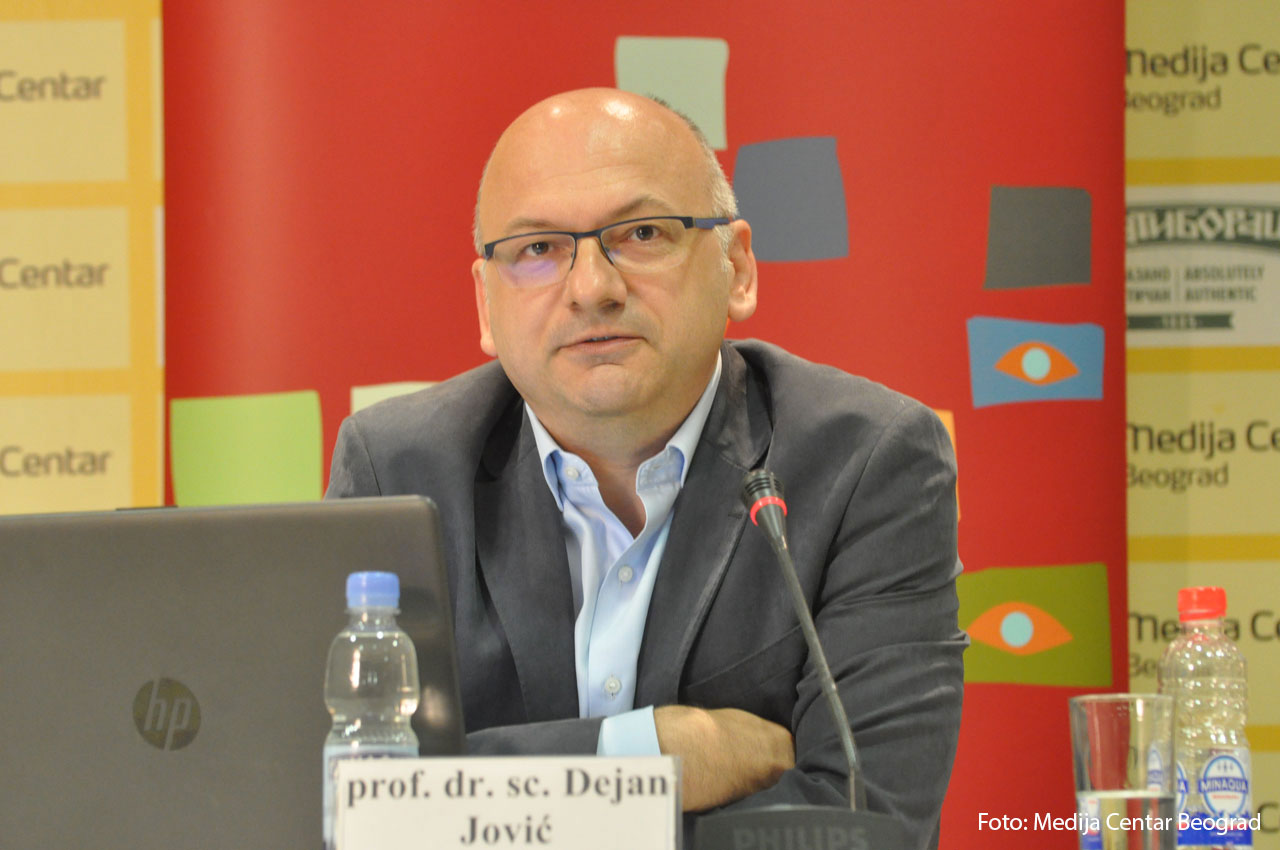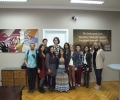Jović: The war in Yugoslavia was a war against minorities

On June 15, 2018, the Humanitarian Law Center (HLC) presented its tenth Dossier: “The JNA in the wars in Croatia and Bosnia and Herzegovina“. As the most extensive so far, this Dossier has been covering the period from the end of the 1980s up to May 1992. It explores how the JNA and the political leadership of the Socialist Federative Republic of Yugoslavia (SFRY) and of Serbia prepared for the wars, the JNA’s involvement in the conflicts, and its contribution to achieving the wartime goals of Serbia, the Republic of Serbian Krajina and Republika Srpska.
Nemanja Stjepanović from the HLC said that the goal of the Dossier was to point to the crimes committed during the armed conflicts in Croatia and Bosnia and Herzegovina, and to the responsibility of the perpetrators and initiators, as well as to place these events in a wider historical context for a better understanding of them. The Dossier illuminates the process of the restructuration of the JNA from the Yugoslav into the Serbian army, its transformation as the focus of its activities changed, the alterations of national structures within the JNA, and, finally, the partiality it showed in dedicating itself to the goal of “defending the Serb people”. A survey the HLC conducted, presented within this Dossier, showed that “defence” was reduced exclusively to the conquest of the territory.
In the presentation regarding the Dossier, Dejan Jović, professor at the Faculty of Political Science in Zagreb, particularly emphasised its educational function, which is of great importance in the circumstances of the existence of different and mutually conflicted interpretations of the facts and historical events. Jović stressed that the key mistake in contemporary analyses of the period of the break-up of Yugoslavia lies in the desire to perceive the JNA as a homogeneous, coherent and politically unified structure. On the contrary, internal political divisions in the JNA were quite considerable, and neither the JNA nor the then political and military leadership had the mechanisms to deal with this growing pluralism. The ideological discord between those who were for more unitarism and those for more federalism increased after the global collapse of the ideology of socialism, and democracy instead was imposed as a concept. In all parts of the former Yugoslavia, however, democracy was interpreted exclusively as the rule of the majority, while the concept of minorities was neglected as a discarded product of the socialist epoch. Jović believes that precisely in such a perspective lies the key point of the shift: the question was raised for the JNA as to whether a majority or a minority should be protected in any eventual conflict. Both the military and the political apparatus opted for the majority, but the problem was that in Yugoslavia no nation represented the majority; therefore it had to be created. In all the then republics the fear began to grow that the rule of the majority in fact threatened their rights, and so everyone developed the idea that it was better to be the majority in a smaller state than the minority in a larger country. Majorities began to be created by the expulsion or assimilation of minorities.
On the other hand, the international community did not immediately support the secession of the republics and the creation of new states. It did so only when it became clear that Yugoslavia did not want to maintain peace and started threatening its citizens rather than protecting them, as became clear after the shelling of Vukovar and Dubrovnik in the fall of 1991. Only then did the international community conclude that Yugoslavia no longer deserved international recognition.
Jović stressed that the dissolution of the JNA was the logical consequence of the breakdown of Yugoslavia, and that this Dossier shows that the dissolution of the JNA was only partial, as there remained a solid structure that survived the transformation and found itself under new command. Those who, at least declaratively, firmly believed in the ideology of socialism and now considered other fellow citizens as enemies, became part of it.
The author of the Dossier, Jovana Kolarić, explained the stages of the JNA’s transformation in Croatia from the federal into the Serbian army. The first phase began in March 1991, when the JNA had the role of buffer zone between the battling sides. The breakthrough event, in August 1991, was the decision of the JNA to attack the village of Kijevo near Knin, jointly with the Territorial Defense (TO). Then the second phase of the transformation occurred, in which the JNA sided with the Serbs, shelled Croatian towns and attacked Croatian villages in Lika, North Dalmatia, Eastern Slavonia and Banija. Houses were destroyed, towns and villages ruined in these attacks, and a large number of civilians were killed and expelled in the territory controlled by Croatian forces.
During 1991, the JNA in B&H participated in seizing power in certain municipalities, in cooperation with the Serbian Democratic Party (SDS). The JNA armed the Serbs in B&H by supplying weapons to the SDS, who then distributed these weapons to Serbian TO and volunteer units. The Dossier explains the takeover of power in six B&H municipalities: Bijeljina, Zvornik, Bosanski Šamac, Prijedor, Brčko and Vlasenica. The result of this taking over of political power in the municipalities was that non-Serbs from these municipalities were expelled, and a large number of them were killed.
Ivana Žanić, the coordinator of the HLC legal team, stressed that after the withdrawal of its troops in May 1992, the JNA continued to exist in both Croatia and B&H, through the existence of the Serbian Krajina Army (SVK) and the Republika Srpska Army (VRS). The matrices of the connections between the JNA and the SVK and the VRS were almost identical: after withdrawal, the JNA would leave their equipment, weapons and personnel to these armies, and provide support in training and data exchange. In Croatia, members of the JNA and TO entered the newly formed Special Police Units (PJM), some of which later formed the Serbian Krajina Army (SVK). The JNA left the SVK its equipment, weapons and personnel. In B&H, after withdrawal the JNA also left its weapons, ammunition, equipment, and personnel to the VRS. With regard to this, the VRS General Headquarters consisted of members of the JNA: Ratko Mladić, who until then had been the head of the 2nd Military District of the JNA, was appointed Chief of Staff, while Zdravko Tolimir, who in the JNA was the Chief of Security in the 2nd Military District, was appointed Chief of the Intelligence and Security Sector.
The support to the SVK and the VRS later continued to be provided by the Army of Yugoslavia (VJ) by the formation of the 30th and 40th Personnel Centres in 1993. The goal of forming these centres was to regulate the status of VJ officers who served in these armies, since by the existence of personnel centres, officers serving in the SVK and VRS could enjoy the same status as VJ officers, but at the same time maintain the attitude that Serbia was not participating in conflicts in these countries. Officers sent to the VRS and SVK had the right to receive pensions, housing, scholarships for education and medical treatment in medical institutions in Serbia. For example, the entire VRS General Headquarters was made up of VJ officers who were appointed to the VRS through the 30th Personnel Centre.
The research for this Dossier has already led to the HLC filing two criminal complaints against JNA officers: a criminal complaint against Dusan Loncar, who ordered an attack on the village of Lovas in October 1991, and a criminal complaint against several JNA officers for a crime committed in the Croatian villages of Škabrnja and Nadin in November 1991.























